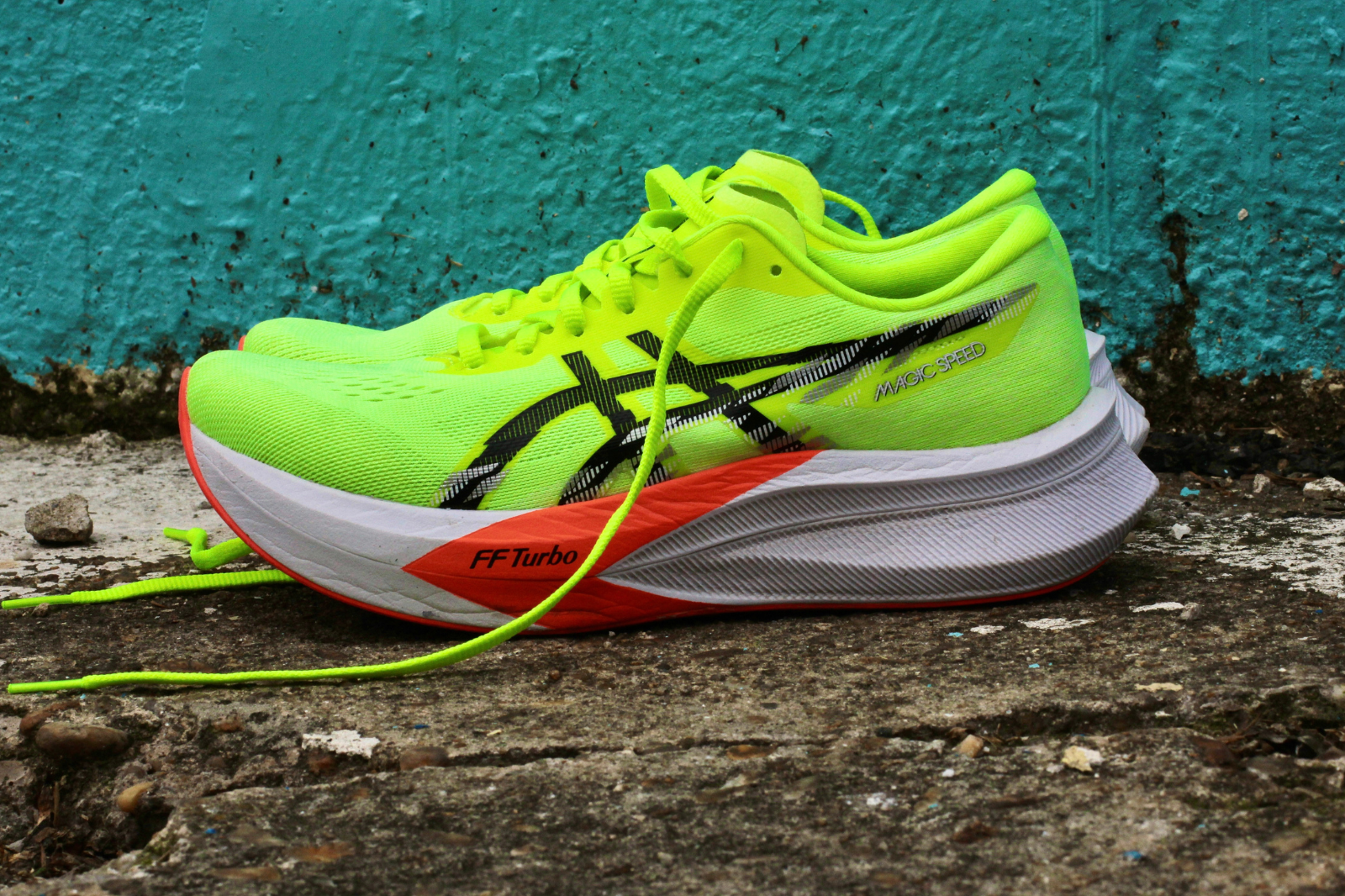
We independently review everything we recommend. When you buy through our links, we may earn a commission.
8.5 oz. (242 g) for a US M9/ 7.3 oz. (207 g) for a US W7
43.5 mm in heel, 35.5 mm in forefoot (8 mm drop)
Tempo or race day up to half marathon
Engineered mesh upper, full-length carbon resin plate, Flytefoam Blast Plus midsole with forefoot puck of Flytefoam Blast Turbo, ASICSGRIP outsole
Available July 5 for $170
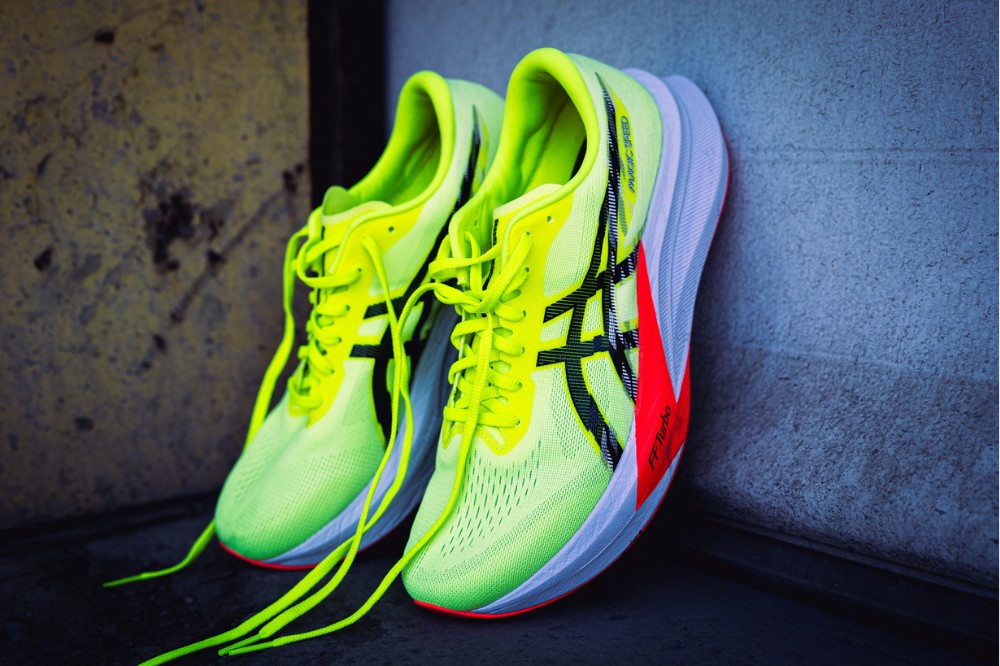
ROBBE: I’ve reviewed every edition of this shoe, and I feel like I’ve exhausted all my Harry Potter and Gob Bluth references. I suppose I could move on to David Blaine since Wide Foot Jarrett looks exactly like him and is often asked to levitate in public. Or I could just move on to the shoe review. Let’s go with that.
The Asics Magic Speed has been a shape-shifter of sorts; in the span of three years, it’s been mediocre, bad, and great, depending on the version. I’ve never met a more bipolar shoe, but it keeps you on your toes. Literally, because it’s always been a tempo shoe that can only be used at faster paces and only excels when you’re on your toes. Each version has seen a mix of Asics ingredients — carbon plates (both half and full length), FlyteFoam Blast, then Blast Plus. All in lightweight packages, yet all completely different.
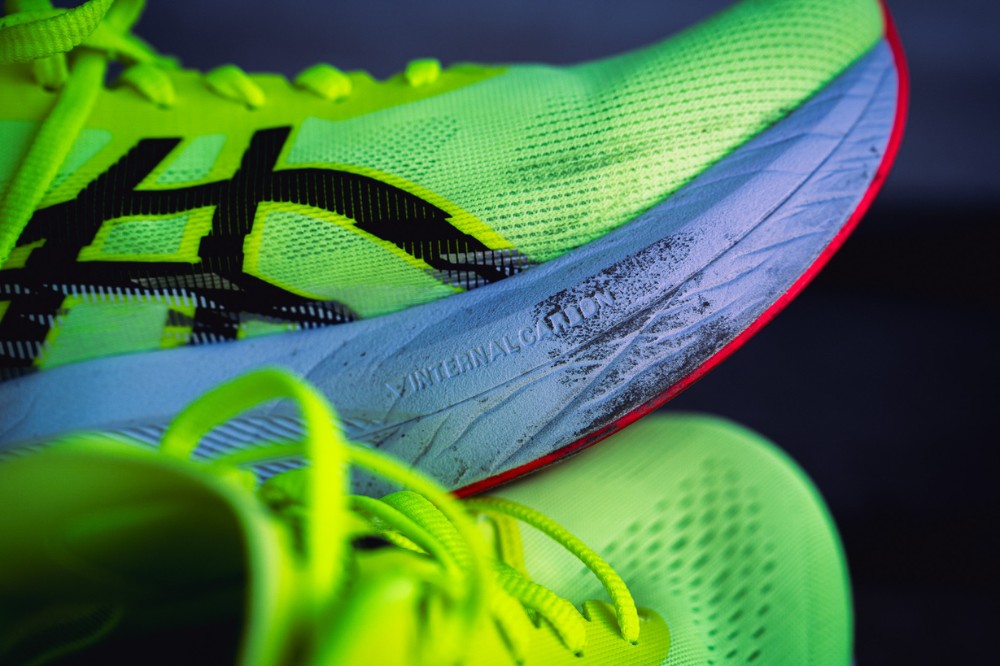
So I wasn’t sure what to expect with the Magic Speed 4, a shoe that still has a majority Flytefoam Blast Plus midsole, this time with a puck of Flytefoam Blast Turbo (Asics’ premium race day foam) in the forefoot, positioned above the plate. It also comes with a much higher stack height at 44.5 mm in the heel, nearly as high as the much-adored Superblast. Add in a full-length carbon resin plate with a dovetail split in the heel, put it in a slightly heavier (but still lightweight) package, and on paper, you have something that sounds like a budget Superblast.
It’s not that — at all — but it is something worth talking about. So let’s talk about it.
THOMAS: Robbe and I have agreed on every other version of this shoe. Will the magic continue, or will we be in separate houses this semester? Guess who’s in Slytherin and who’s in Hufflepuff.

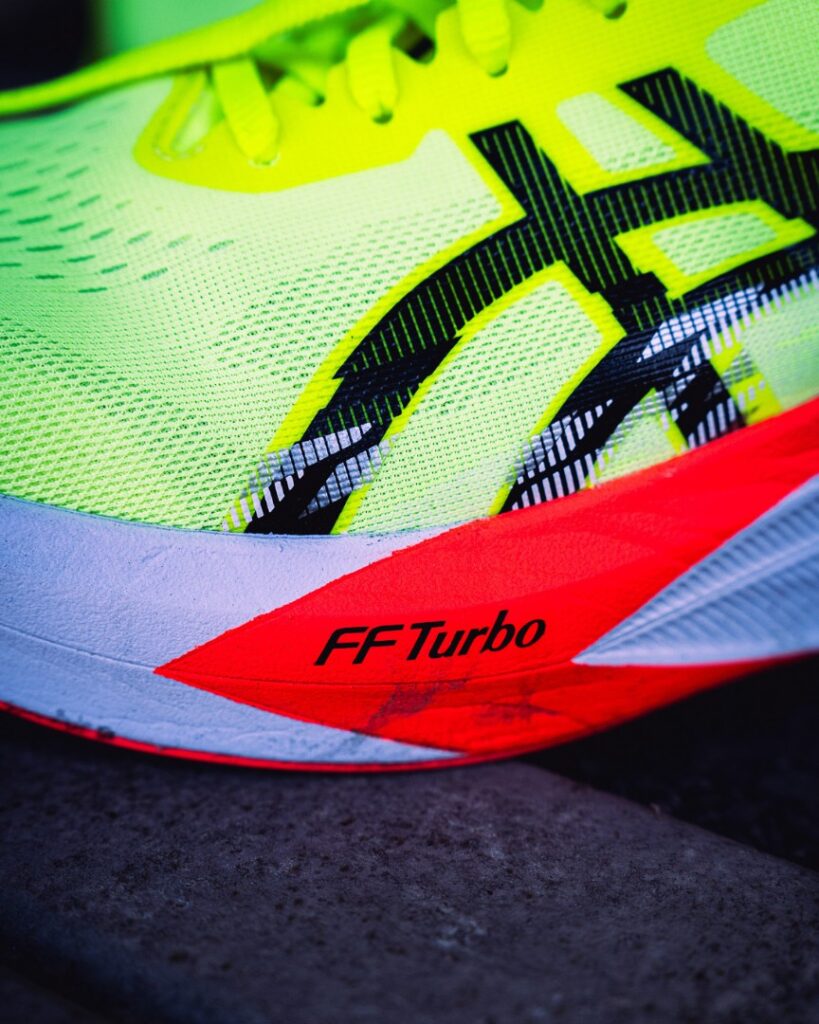
RYAN: So, unlike Robbe and Thomas, I’ve never reviewed a Magic Speed before — let alone an Asics shoe in general. But, rather than go back and read their previous reviews so that I know what wizarding references they’ve already made, I’m gonna go in blind, kind of like I did when lacing up the Magic Speed 4 for the first time.
I’m not actually going to make a ton of magical references anyway, but only because you, dear reader, have already sat through three parts of an intro and probably don’t care that I’m here. Anyway, I’ll admit off the top that I was confused about the positioning of the Magic Speed 4, as the spec sheet Robbe sent my way made it sound so, so close to the Metaspeed Sky Paris, my current racing favorite. It took two or three reads through the stack, foam, and plate before I figured it all out — the Magic Speed 4 has more foam but less FlyteFoam Turbo and a slightly different carbon fiber plate (but it is indeed carbon fiber and not nylon).
Alright, now that we’re all on the same page in yet another category of shoe, let’s move along.
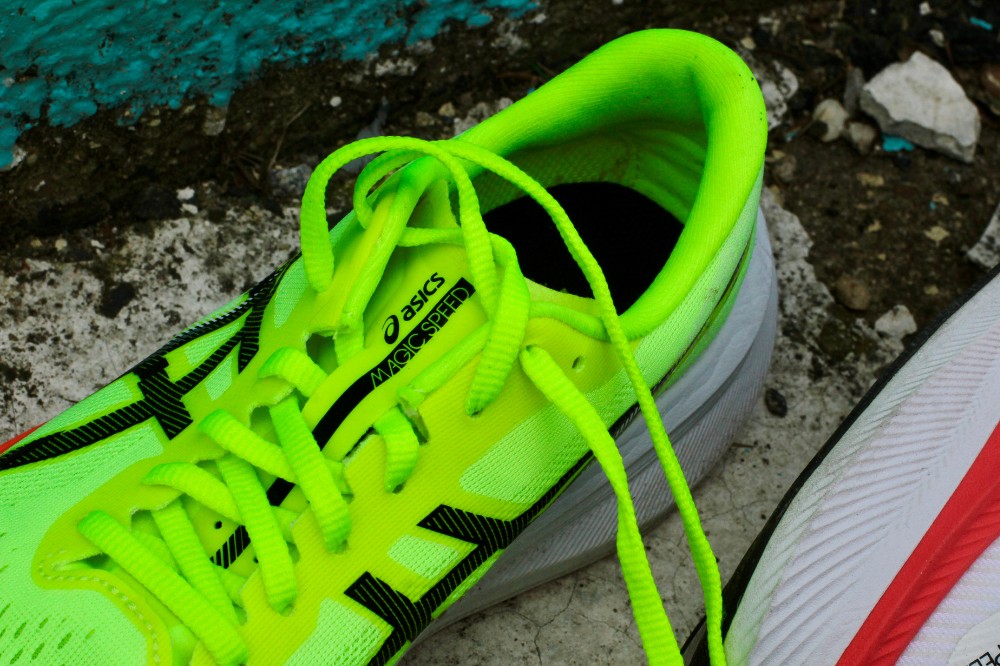
ROBBE: I always like to start out with looks, and man — this is a nice-looking shoe. It’s simple and clean, and that’s what you want on your feet when trying to pick up the pace. The neon yellow will turn some heads, and the arrow coloration on the midsole is a nice touch.
Moving onto the upper, the engineered mesh is pretty simple and standard. This is different from the Motion Wrap upper in last year’s version and, honestly, a bit cheaper feeling. It’s fine; it’s just not as good as the upper in the Magic Speed 3 (more on that later). Material-wise, there’s not much to talk about, but it’s light and breathable. The gusseted tongue is nearly identical to the last version of the shoe and lays flat without any issues.
On the run, my foot felt secure in both the heel and midfoot, which is always a good sign when dealing with a plate. Sometimes, the stiffness of a plate can create some heel lift, but that wasn’t the case in this shoe. There is extra room in the toe box this go-around. It’s not so much that it’s sloppy; it’s just not that super tight racer feel that you got from the Magic Speed 3.
Moving onto the midsole and ride of the shoe. Instead of a full FlyteFoam Blast Plus midsole, we get a mostly full FlyteFoam Blast Plus midsole, and a lot of it — 7 more millimeters, to be precise. At 44.5 mm in the heel (for men; for women, it’s 1 mm less), that puts this shoe in the “illegal” territory of race day shoes by World Athletics standards, which means Clayton Young won’t be lacing these up for competition anytime soon. And then there’s the much-lauded Flytefoam Blast Turbo in the forefoot, all combined with the full-length carbon resin plate.


All of this comes together in what is the best version of this shoe to date (and I really enjoyed last year’s version). I’ll be honest, I was skeptical in my first mile in the shoe. Everyone was hyping this as a budget Superblast or Metaspeed, and it kind of is those things, but it really isn’t either of those in terms of feel. So, if you’re expecting that big bounce or aggressive edge of those two, just clear the slate and start over. Asics ain’t gonna like this, but I assure you it’s a compliment: I’m here to tell you that this shoe feels like a mix between the Adidas Boston 12 and Adios Pro 3.
If you’re not familiar with either of those shoes, I’ll spell it out for you. The Asics Magic Speed 4 is not a daily trainer, a recovery shoe, or a versatile shoe. It’s a tempo shoe, a workout shoe, and even a race day shoe. It really only works when it’s going fast. That’s not to say you can’t go slower in the shoe, and it seems to break in a bit more after about 20 miles. In the beginning, slow miles in the shoe in the beginning felt awkward, but my last long run in the shoe was generally fine, nice even. So maybe it just needs more miles to even itself out? I just felt it really comes alive when the pace is pushing. It’s not a soft or super bouncy feel like Peba-based midsoles; in fact, it’s more of a dense feel, but it’s not firm at all. It just feels very runnable.
With 25% more stack height than the last version of the shoe, it’s definitely a bit more versatile in terms of comfort and distance. Again, it’s not a soft shoe — it’s still a performance shoe that wants to go fast. But the Magic Speed 3 was a pure tempo/5K-10K shoe in the same realm as the Adidas Takumi Sen 10 or Hoka Cielo Road. It even had the Motion Wrap upper found in the Metaspeed line. The Magic Speed 4, on the other hand, can easily go up to the half-marathon distance and maybe, just maybe, the marathon.
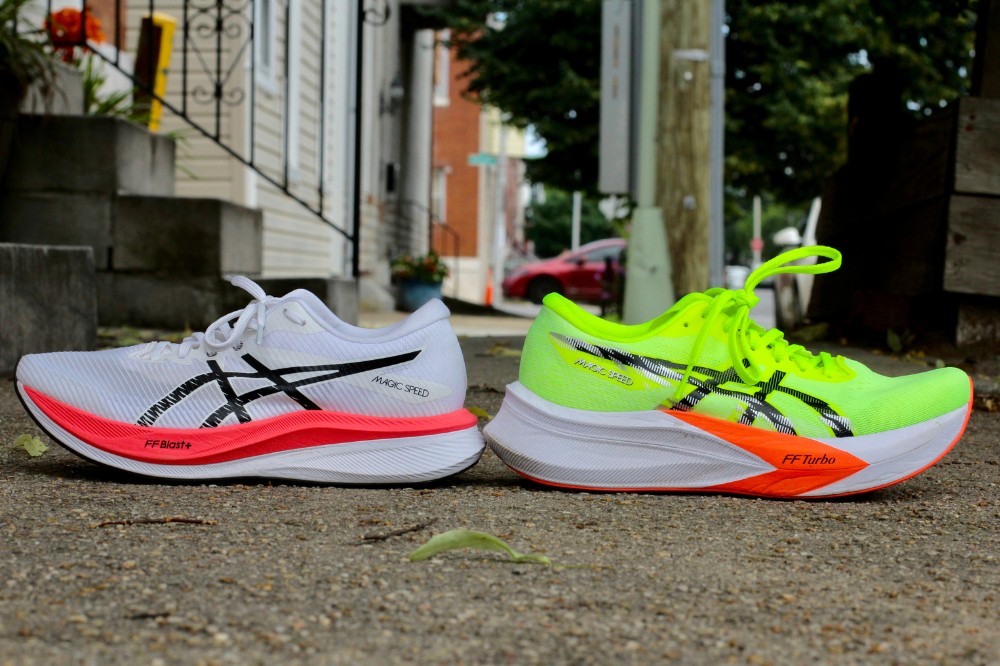
Shoes like the Saucony Endorphin Speed 4, Adidas Boston 12, and New Balance SC Trainer v2 are all do-it-all shoes, but they tend to be a little safe when it comes to race day. So even though they could be considered “budget racers,” the Asics Magic Speed 4 is probably the truest definition of that term.
A wider forefoot also makes this a more stable shoe. I took out the Magic Speed 3 for a quick comparison and forgot how sketchy that shoe could be, this shoe offers much more stability on landing, most notably for mid- to forefoot strikers.
You get the carbon resin plate (a bit more flexible than straight-up carbon fiber), you get the sensation of the Flytefoam Turbo Blast in the forefoot, and you get that fast feeling overall, but it’s not as jarring as taking the leap from the Novablast 4 to the Metaspeed Sky/Edge Paris. It’s essentially a true bridge between those shoes. In
I should also mention that this version of the shoe is slightly more stable than past versions, even with a higher stack height. The forefoot platform is almost a quarter of an inch wider, providing a surer landing than the Magic Speed 3 or the Metaspeeds.
At $170, it’s the going rate for all shoes in this range.
THOMAS: Robbe is right about the looks of the shoe. I love a shoe that looks like a running shoe, and the Magic Speed 4 looks the part of an uptempo option.
The FF Blast Plus softened up over the testing of the Magic Speed 4 and got better with every mile. I didn’t feel the FF Turbo puck in the forefoot, but the overall feel of the two foams paired with the plate is positive. While the shoe isn’t what I expected as a follow-up to the third version, I like the ride and the aggressive toe spring. As the foam broke in, it felt more forgiving and I enjoyed the level of resilience through my stride. My first thought (before even discussing the shoe with Robbe) was that the Magic Speed 4 ride reminded me of the Adidas Boston 12. The Boston 12 was one of my favorite super trainers in 2023, but honestly, the upper on the Magic Speed 4 is better.
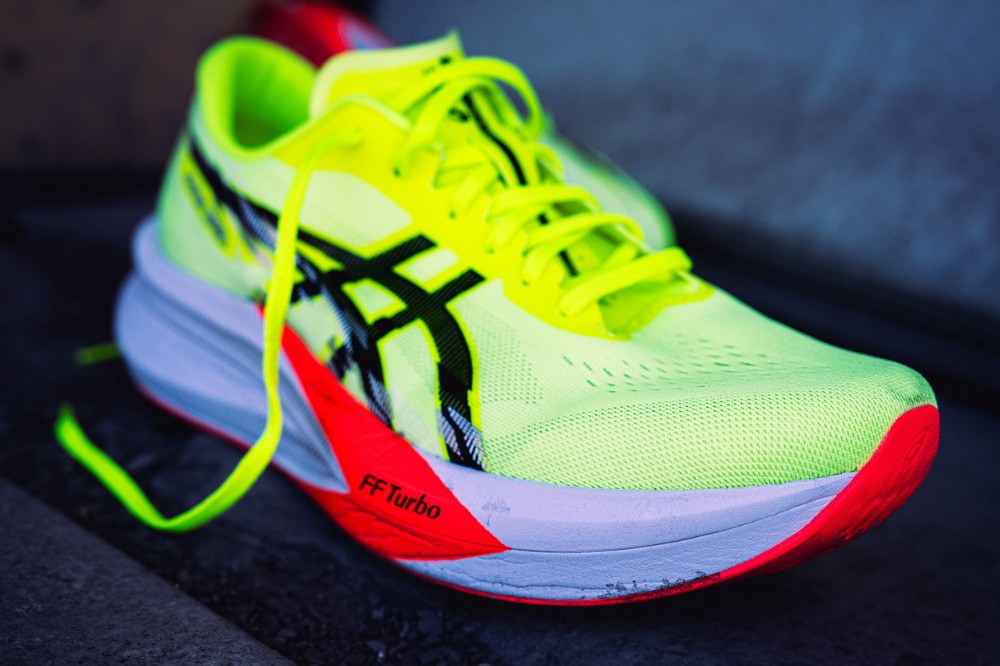
Speaking of the upper, the shoe fits true to size and provides an excellent lockdown. Last year, I was wearing a US M10 in the standard Asics daily trainers and an M10.5 in the race day shoes. Asics seems to have fixed the issue and I am back to a US M10.5 across the board.
I didn’t notice the extra stability in this version compared to the previous. However, the midsole geometry now more closely mimics the Metaspeed twins. That should make the Magic Speed 4 a better training companion to the Metaspeeds, but we’ll get into that later in the conclusion. The outsole does the job that is intended, the grip is good, and the midsole is protected.
I disagree with Robbe when he makes it sound like the Magic Speed 4 is a one-trick pony. While it excels at tempo paces, it works in more casual-paced runs as well. I ran easy miles and fartleks while getting my miles in for the review, and I enjoyed both easy paces and faster efforts.
RYAN: I can guarantee to you, 100%, that I don’t have as many miles in the Magic Speed 4 as either Robbe or Thomas. Unfortunately, as I make my way back from an injury, I’m just not back to the weekly mileage I need just yet. I’ve also largely been avoiding carbon-plated shoes as a way to let my foot build its strength back up. So, you could say that this one came at an inconvenient time.
However, that didn’t stop me from lacing up the Magic Speed 4 in its radioactive yellow and red colorway and taking it out for a half-dozen miles on day one. They weren’t the fastest miles, but they count nonetheless. Immediately, I could tell that this is a little bit different from most of the other uptempo trainers I’ve tried in my running career. Whereas options like the Adidas Takumi Sen and Hoka Cielo Road are super soft and definitely not meant to go above a half marathon, the Magic Speed 4 is quite a bit firmer and feels like it has support that will last for a long run. Personally, it might feel a bit too firm at times, but that might also be because I’m getting used to hard plastic orthotics in my running shoes — which aren’t much fun.
Firmness aside, I really felt like the Magic Speed 4 worked well with my stride. I’m working on landing a bit more medially and a bit further forward, and the shoe adapted to my needs over the course of my miles, especially as the FlyteFoam Blast Plus broke in. Like Thomas, I can’t say that I really noticed the puck of FF Turbo in the forefoot, but I also didn’t seem to mind it. It’s kind of like the Zoom Air pods in the Nike Pegasus — there for the branding more than anything.
Shop The Shoe - Men Shop The Shoe - Women
ROBBE: Much of the bad has to do with the fact that this shoe is just a bit confusing and it’s going to require you to get past that.
Let’s start with the words FF Turbo, painted loud and clear on the midsole. This would almost suggest that we’re working with the same kind of midsole found in the Superblast. We’re not, though, because the FF Turbo is relegated to a mere chunk in the forefoot, right below the carbon fiber plate. Everything else is Flytefoam Blast Plus. Look, I get it, everyone does this. Nike writes ZoomX on the midsole; just don’t mind that it’s a small piece sandwiched somewhere inside. The same goes for Adidas and Lightstrike Pro in the Adizero SL. I just feel like I shouldn’t have to bust out my archaeology kit to go looking for it.
More confusion enters the chat when I look at the upper. It’s kind of cheap feeling/looking and is a step down from the Magic Speed 3. The Motion Wrap in that shoe was fantastic — snug and secure and felt like a true speed shoe. Asics is clearly trying to reach a broader audience with this upper, but it just seems a little too safe for me. Do you want this to be a fast, performance shoe or not?
Generally speaking, I think more people will enjoy the extra room in the toe box and the more accommodating fit, but man — the Motion Wrap felt so snug and really gave the foot a perfect lockdown. Because of that, I didn’t feel like you could get the same toe-off or quick turning action that you could in the Magic Speed 3. It’s just not as nimble; no question about it. I really enjoyed that in the last version, and missed it in this one.
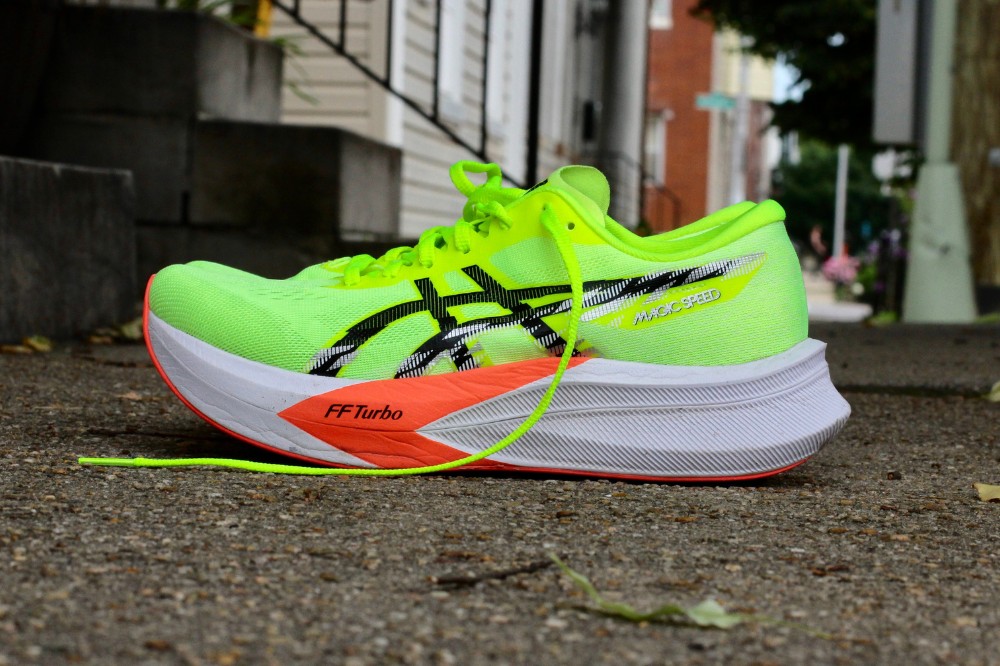
THOMAS: I have to agree with Robbe; this shoe had me scratching my head. I just don’t know where it fits in. The Magic Speed 4 is a jack of all trades but a master of none. I’m not sure I would recommend it as a do-it-all shoe, but only because Asics already nailed that with the Superblast. It also wouldn’t be my pick as a race-day shoe. Don’t get me wrong — it would be a good choice for race day for the runner who doesn’t want to drop $250 for the Metaspeed Edge Paris. At $170 I could make an argument for why it would be a good race day choice.
Also, I would have liked a more premium feeling upper like Motion Wrap on the Magic Speed 4.
RYAN: The guys are right, this is a confusing one, but only because of the fortunate position we’re in. If you’re someone who is used to racing in a tempo shoe like the Saucony Endorphin Speed 4, the Magic Speed 4 will probably make perfect sense to you. It’s aggressive rather than plush, and the carbon fiber plate finds a way to work some bounce into your stride. Personally, I’m not sure where I’d reach for it, but only because I already use the Superblast and Metaspeed Sky Paris as my one-two punch when I’m not reviewing another shoe.
Also, yes, the radioactive yellow colorway has some pop to it, but it’s a little much for me. I’m not gonna pull a Meg and demand an all-white colorway, but I do kind of prefer the look of the previous Magic Speed 3.
Shop The Shoe - Men Shop The Shoe - Women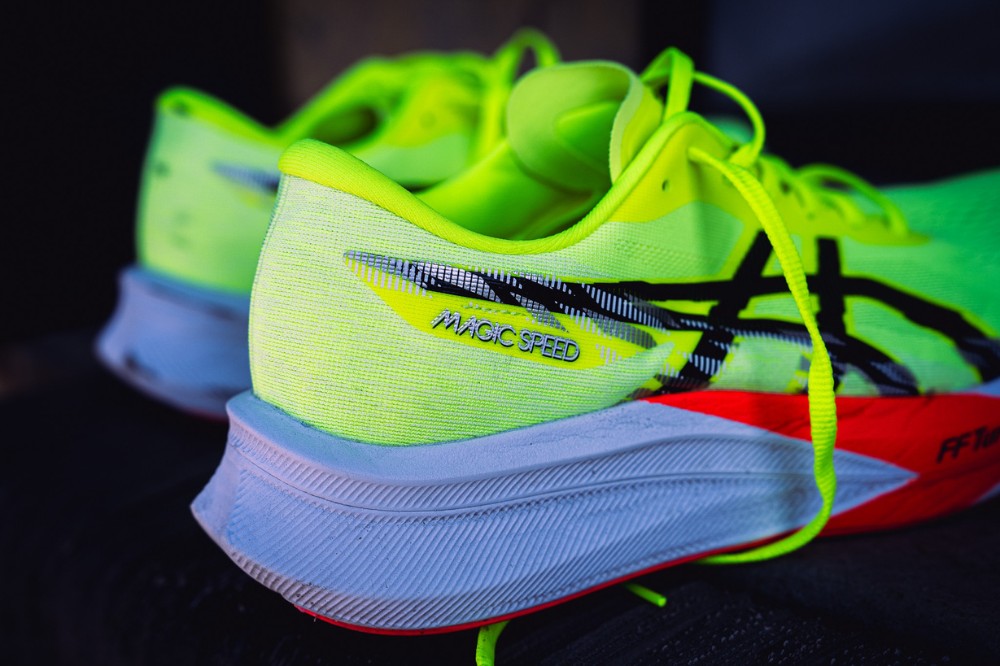
ROBBE: Overall, I really enjoyed this shoe, and — despite my feelings about the upper — I think it’s the best version of the Magic Speed to date, or at least, my favorite. I do think the changes move this from a true tempo/5K/10K shoe into more of the super trainer range, but it hasn’t swung quite so far that it lands among the Saucony Endorphin Pro 4 and New Balance SC Trainers of the running world. It’s also not as versatile as the Superblast. In fact, this shoe brings back some of that raw feeling I got in the Saucony Endorphin Speed if you take away the aggressive rocker.
This shoe is the perfect option for someone looking for a budget racer or a more versatile tempo shoe or someone who is looking to dip their feet into the carbon-plated race world for the first time.
THOMAS: I’m not sure if I would call this the “best” Magic Speed. I was a fan of the previous version, but the Magic Speed 4 is different in ride, personality, and function. While the Magic Speed 3 was specifically a 5k/10k racer, this one has enough underfoot that it can go the marathon distance.
So, where does the Magic Speed fit in? The Superblast is an amazing do-it-all super trainer, the Novablast is one of my favorite daily trainers, the Nimbus covers max cush, and the Metaspeed Sky/Edge Paris are my current favorite race day shoes.
So, is the Magic Speed 4 a good training partner for the Metaspeeds? I would say so. You can use the Magic Speed 4 as a heavier stand-in for speedwork, and when race day comes, shed two ounces per foot and feel like you can float through your paces. The shoe is also a good option for the budget-minded racer. FlyteFoam Blast+ is durable, and when paired with the responsive FF Turbo and a resin carbon plate, the Magic Speed 4 should serve you well for many miles.
Mischief managed.
RYAN: Is this the best Magic Speed that I’ve run in? Yes. Is it the only Magic Speed that I’ve run in? Also yes. However, that limited experience is still enough for me to say that this is to Asics what the Endorphin Speed has always been to Saucony, just with a little less rocker. It can go fast enough for racing yet is flexible enough to soak up some longer workouts and daily miles in a pinch. Of course, it sits in a tricky position with so many other shoes in the Asics lineup, but what shoe doesn’t have a little too much competition these days?
You can pick up the Asics Magic Speed 4 for $170 on July 5, 2024, from Running Warehouse (featuring free shipping and 90-day returns) by using the buttons below.
Shop The Shoe - Men Shop The Shoe - WomenHave something to say? Leave a Comment

Robbe is the senior editor of Believe in the Run. He loves going on weird routes through Baltimore, finding trash on the ground, and running with the Faster Bastards. At home in the city, but country at heart. Loves his two boys more than anything. Has the weakest ankles in the game.
More from Robbe
As the founder of Believe in the Run, Thomas’s goal is to help runners pick the shoes and gear that will make their running experience the best that it can be.
More from Thomas
Ryan is kind of like Robbe’s Igor behind the scenes. He helps to compile and clean up everyone’s reviews, and finds time to get in a few miles of his own. When he’s not running or editing, Ryan writes and reviews for Android Authority, spending time with the latest tech and complaining when things don’t work quite right. If he’s not doing any of that, maybe you’ll find him nose-deep in a crossword puzzle or trying to catch up on an endless backlog of shows to stream.
More from Ryan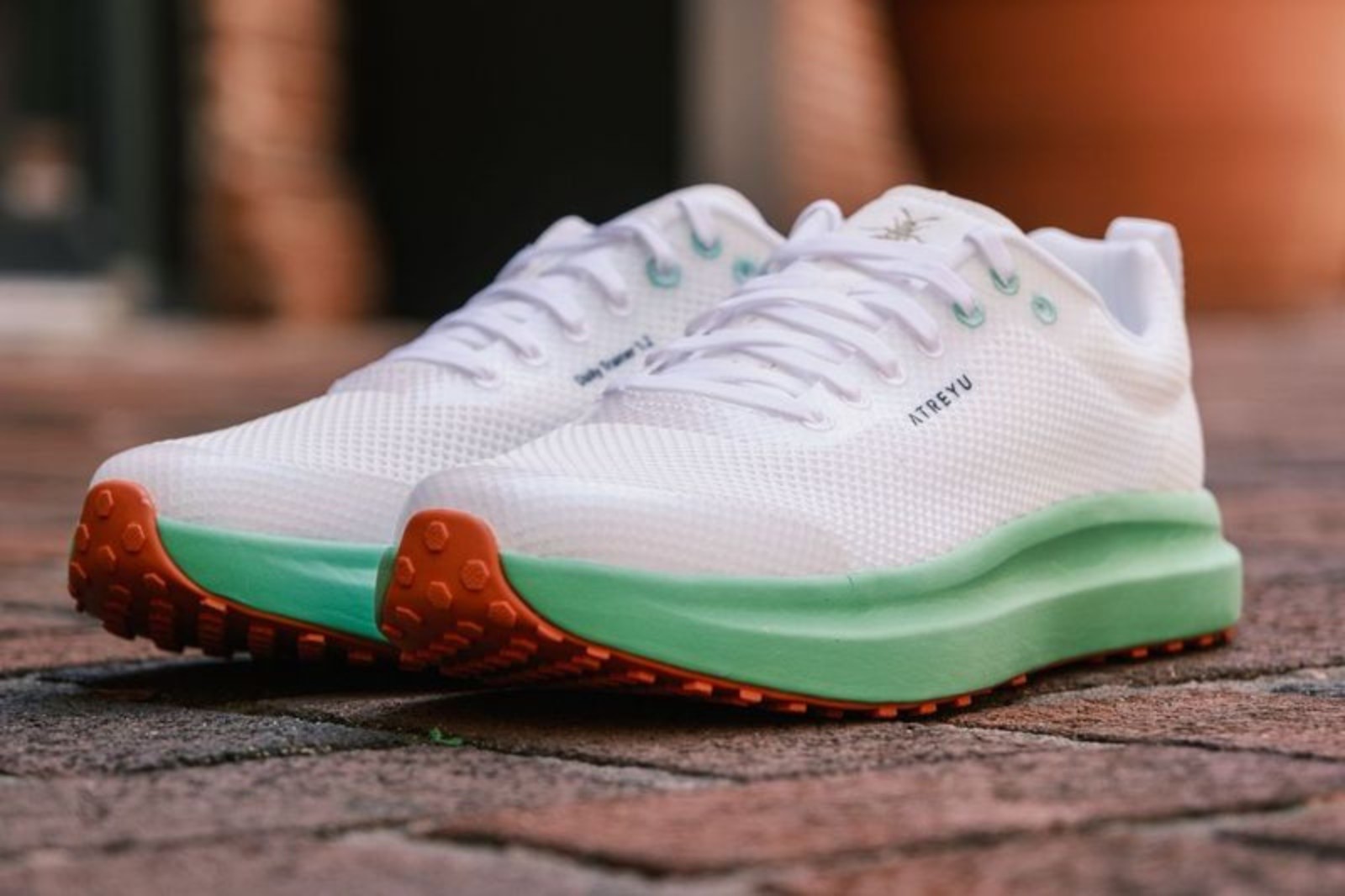

Whether your thoughts on the Magic Speeds are good, bad, or indifferent, one thing is true – you can NEVER make too many Gob Bluth references.
I have tried the 1’s and the 3’s, and wasn’t particularly impressed. However, I’m strongly considering one of the Metaspeeds for Marine Corps in October, so your impressing have me maaaaybe considering the 4’s.
so it kinda sounds like the Asics S4 ???
Currently inbetween the Magic Speed 4 and the Puma Deviate Nitro 3. What are your opinions on these to compared to each other. You said great thing about both.
Currently running in (speed work and races) On Cloudmonster 5-10k to HM, and despite what other ppl think I like how the monster feels on my foot. Tried the deviate nitro 2 elite and felt good. I have/had the Nimbus 25 as a daily easy miles trainer it was nice but a bit too bulky imo.
Looking for a shoe to replace the Cloudmonster for faster efforts and races. Current PBs 5k->19:40; 10k->42:07; HM->1:34; M->3:37
Thank you in advance in case you guys answer!
All my PBs are almost in-line with yours, and I’ve run in all these shoes. The fact that you like the Cloudmonster means you’d probably prefer the Magic Speed. It’s a firmer feel but it’s fast. If you want more of a bouncy ride in a do-it-all shoe then go with the Deviate Nitro.